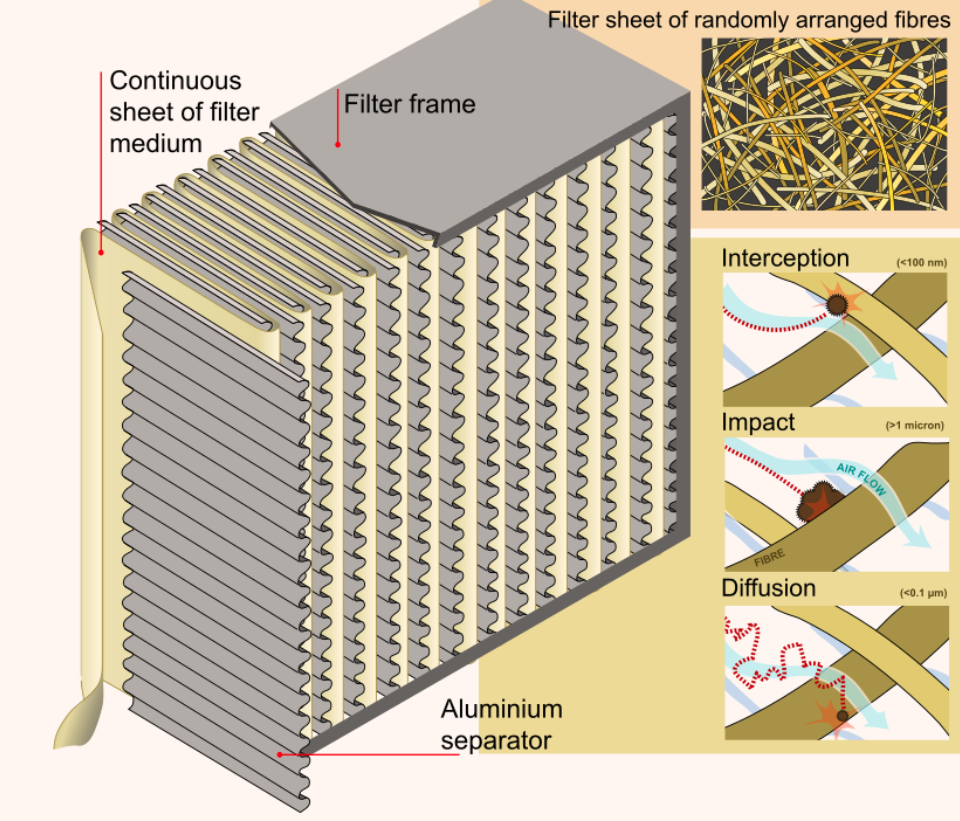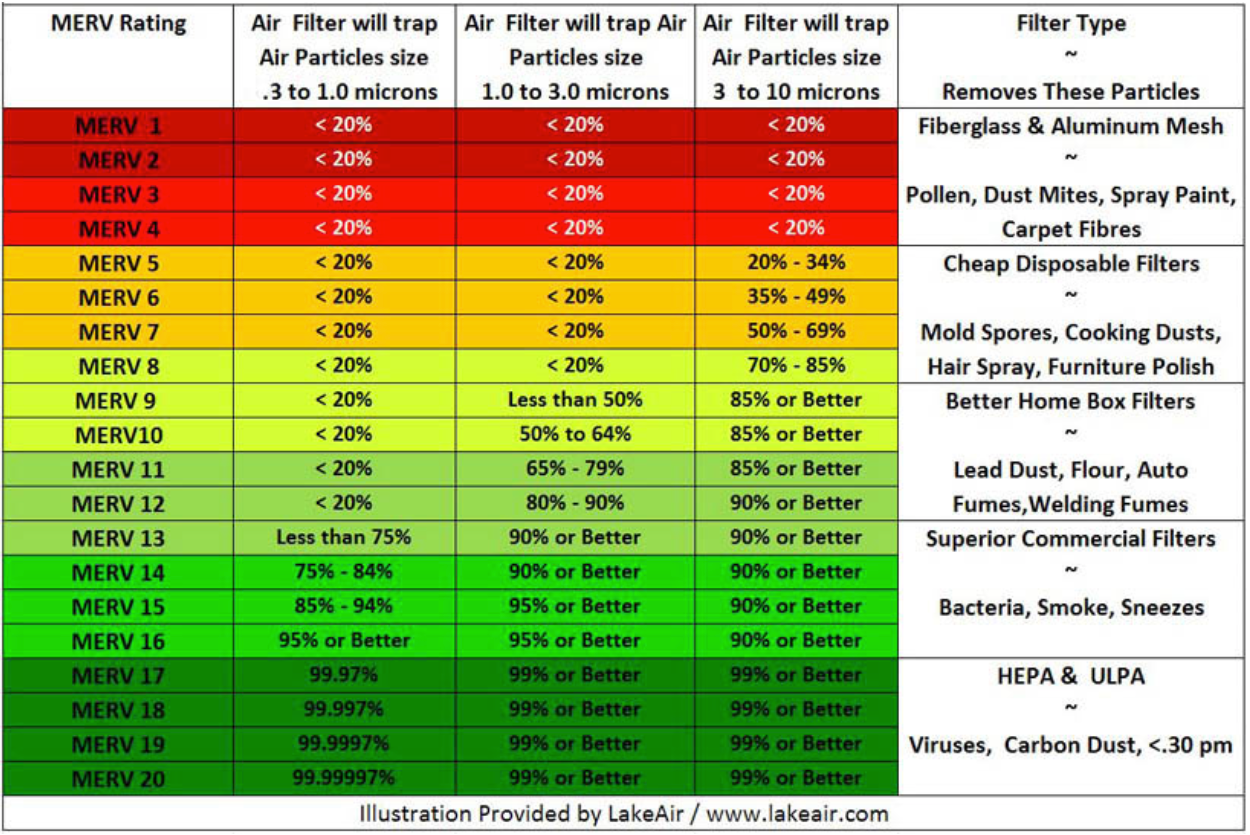A high efficiency particulate air (HEPA) filter can remove 99.97% - 99.99% of airborne particles that are equal to or larger than 0.3 microns in size. The efficiency is rated based on the worst level possible, so think about it as 99.97% or BETTER. The filters are tested on the 0.3 micron size as those are the hardest size particles to catch. HEPA filters are actually more efficient at capturing smaller particles, like those the size of viruses of 0.1 microns due to how these smaller size particles behave (see NASA research). This is based on MERV (minimum efficiency value rating) ratings as determined by the American Society of Heating, Refrigeration, and Air-Conditioning Engineers (ASHRAE).
A HEPA filter is not like any regular air filter you typically put in your house. HEPA filters are a pleated mechanical air filter that have a considerable thickness in order to capture the particulates. The pleats create a mat of fibers that are randomly arranged. The random, dense arrangement of fibers helps to catch a range of particle sizes. As air particles pass through the air filter, they are caught by three mechanisms: diffusion, interception, and impaction.
Diffusion occurs when the the gas molecules that are smaller than 0.1 micron in size collide with each other and are delayed in passing through the filter. The delay will make it more likely for the next two mechanisms to occur for those smaller particles. Interception is when particles moving along the air stick to a fiber. Impaction, the third mechanism, is when the larger air particles embed directly into the fibers themselves.
In an attempt to extend the usage life of a HEPA, a pre-filter can be included in the set-up which helps to remove the larger particles, leaving the finer particles to be caught by the HEPA. We know this at ISO-Aire, and all of our commercial air purifier units that we offer come with MERV-8 pre-filters to extend the life of the HEPA filter that is within.
Although HEPA filters succeed in removing air particles, they are not effective at eliminating odors or noxious gases like volatile organic compounds (VOCs).
This is where our ISO-Aire unit comes into play. We combine the efficiency of the HEPA with the proven technology of bipolar ionization. The ions produced by bipolar ionization eliminate odors and volatile organic compounds (VOCs). Furthermore, bipolar ionization assists the air-cleaning prowess of the HEPA by causing smaller-sized particles like viruses get bigger from the attachment of the ions it produces, leading to easier trapping of the viruses by the HEPA. We even take it one step further by offering an optional addition of the proven germicidal technology of ultraviolet-C (UVC) light that kills germs before they even reach the HEPA. Anything left alive after being exposed to the UVC and bipolar ionization would hopefully then be caught by the HEPA. A HEPA filter combined with these other two technologies offers a triple trifecta of protection against germs and other airborne contaminants.
<br/>
Can I use a HEPA filter on my existing HVAC system?


